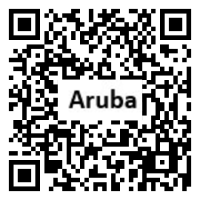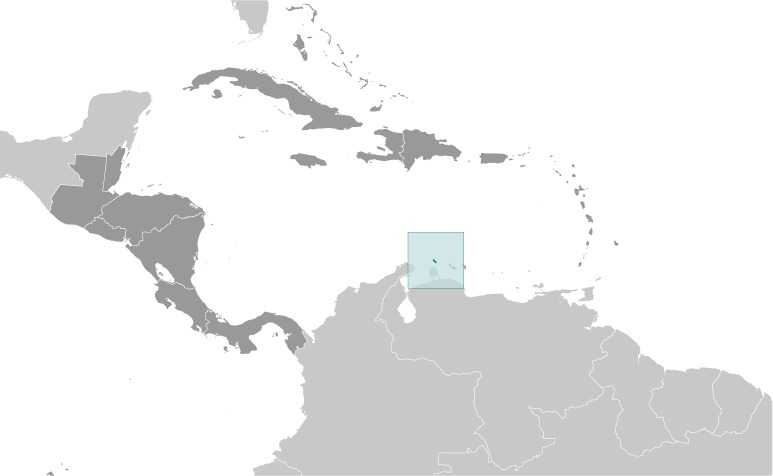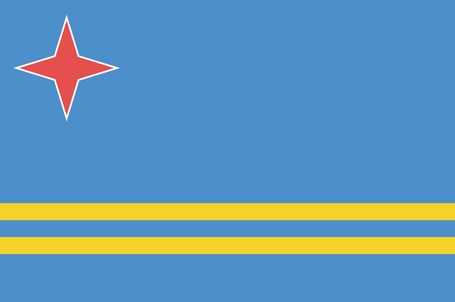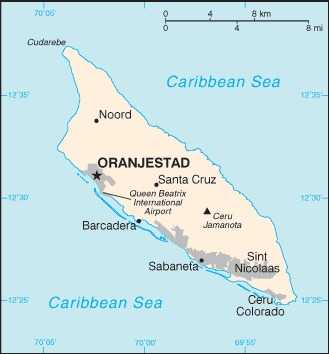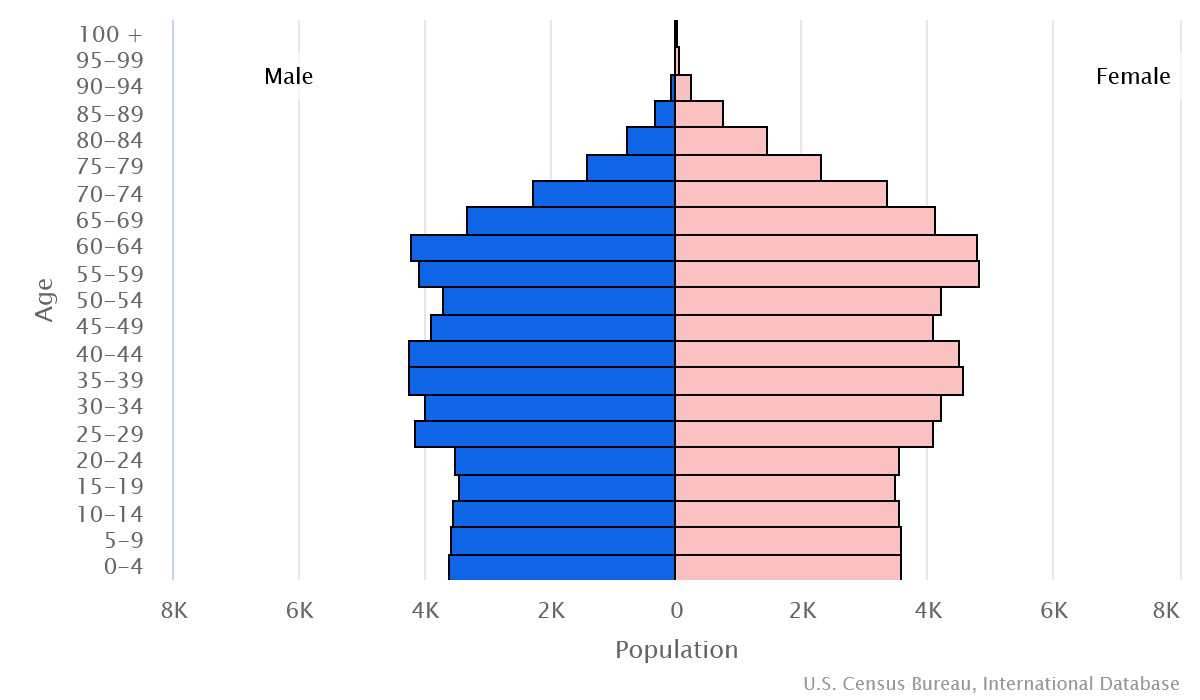Introduction
Background
Discovered and claimed for Spain in 1499, Aruba was acquired by the Dutch in 1636. Aruba seceded from the Netherlands Antilles in 1986 and became a separate, semi-autonomous member of the Kingdom of the Netherlands. Movement toward full independence was halted at Aruba's request in 1990.
Geography
Area
total: 180 sq km
land: 180 sq km
water: 0 sq km
Climate
tropical marine; little seasonal temperature variation
Natural resources
NEGL; white sandy beaches foster tourism
People and Society
Population
total: 125,063
male: 59,101
female: 65,962 (2024 est.)
Ethnic groups
Dutch 78.7%, Colombian 6.6%, Venezuelan 5.5%, Dominican 2.8%, Haitian 1.3%, other 5.1% (2020 est.)
Languages
Papiamento (official) (a creole language that is a mixture of Portuguese, Spanish, Dutch, English, and, to a lesser extent, French, as well as elements of African languages and the language of the Arawak) 69.4%, Spanish 13.7%, English (widely spoken) 7.1%, Dutch (official) 6.1%, Chinese 1.5%, other 1.7%, unspecified 0.4% (2010 est.)
Religions
Roman Catholic 75.3%, Protestant 4.9% (includes Methodist 0.9%, Adventist 0.9%, Anglican 0.4%, other Protestant 2.7%), Jehovah's Witness 1.7%, other 12%, none 5.5%, unspecified 0.5% (2010 est.)
Population growth rate
1.08% (2024 est.)
Government
Government type
parliamentary democracy; part of the Kingdom of the Netherlands
Capital
name: Oranjestad
Executive branch
chief of state: King WILLEM-ALEXANDER of the Netherlands (since 30 April 2013); represented by Governor General Alfonso BOEKHOUDT (since 1 January 2017)
head of government: Prime Minister Evelyn WEVER-CROES (since 17 November 2017)
Legislative branch
description: unicameral Legislature or Staten (21 seats; members directly elected in a single nationwide constituency by proportional representation vote; members serve 4-year terms)
Economy
Economic overview
small, tourism-dependent, territorial-island economy; very high public debt; COVID-19 crippled economic activity; partial recovery underway via tourism, benefitting from its high amount of timeshare residences; considering reopening oil refinery
Real GDP (purchasing power parity)
$4.393 billion (2022 est.)
$3.977 billion (2021 est.)
$3.116 billion (2020 est.)
Real GDP per capita
$41,300 (2022 est.)
$37,300 (2021 est.)
$29,200 (2020 est.)
Agricultural products
aloes; livestock; fish
Industries
tourism, petroleum transshipment facilities, banking
Exports
$2.853 billion (2022 est.)
$2.201 billion (2021 est.)
$1.444 billion (2020 est.)
Exports - partners
Colombia 40%, US 12%, Jordan 11%, Guyana 8%, Netherlands 6% (2022)
Exports - commodities
tobacco, liquor, refined petroleum, scrap iron, orthopedic appliances (2022)
Imports
$2.429 billion (2022 est.)
$1.947 billion (2021 est.)
$1.644 billion (2020 est.)
Imports - partners
US 39%, Netherlands 11%, Guyana 9%, Colombia 8%, China 5% (2022)
Imports - commodities
refined petroleum, crude petroleum, tobacco, jewelry, other foods (2022)
Exchange rates
Aruban guilders/florins per US dollar -
Exchange rates:
1.79 (2022 est.)
1.79 (2021 est.)
1.79 (2020 est.)
1.79 (2019 est.)
1.79 (2018 est.)
Page last updated: Tuesday, May 07, 2024
